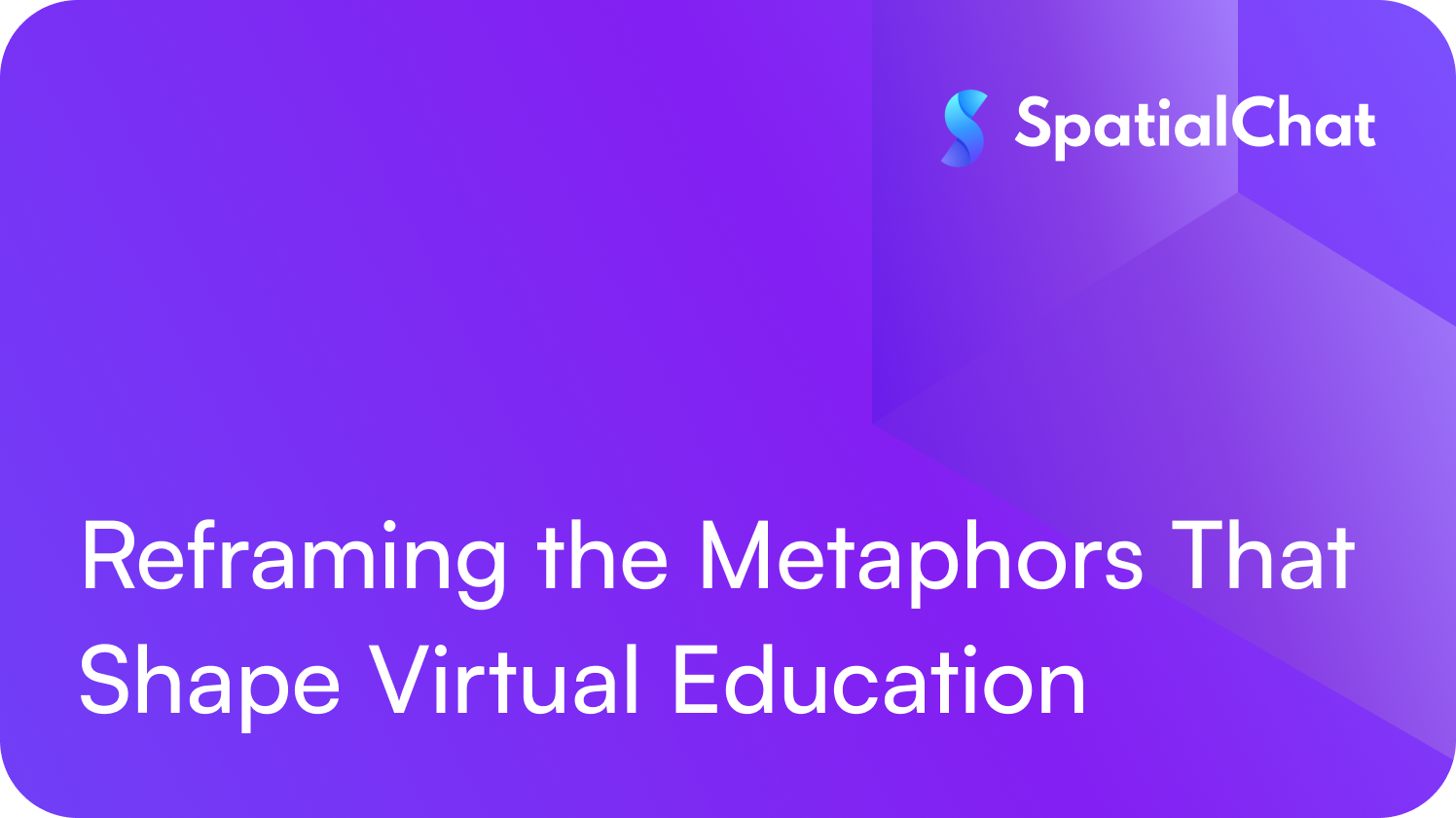At SpatialChat, we believe that how we talk about virtual learning is just as important as the technology behind it. Words matter, not just for marketing or instruction manuals, but for how we imagine and experience the world we’re building together. In education, metaphors do heavy lifting. They help us conceptualize the unfamiliar. But sometimes, those metaphors start to shape things in limiting ways.
One that we keep coming back to is the idea of the digital campus.
Born out of necessity during the pandemic, this metaphor became shorthand for recreating the physical structures of higher education in virtual form. Lecture halls turned into Zoom rooms. Campus events became live streams. Office hours went asynchronous. Everything had its equivalent. But as we move further into a world where digital learning isn’t the fallback but the first choice for many, it’s worth asking—is the digital campus metaphor still serving us?
Beyond Blueprints: From Digital Campus to Digital Commons
We’re seeing a shift. Across conversations with educators, instructional designers, and students, the most impactful virtual spaces are not the ones that try to replicate buildings and corridors. They’re the ones that cultivate a sense of commons—open, participatory spaces where people come together to share, learn, and connect In other words, the best virtual spaces don’t just mimic a university. They feel like a community.
That’s where SpatialChat comes in. Our platform isn’t designed around rigid rooms and top-down instruction. It’s built for fluidity, social presence, and spontaneous connection. Think of it more as a digital quad or a student lounge—places where people naturally gravitate, talk, listen, and collaborate.
Designing for Presence and Belonging
It’s no surprise that learners today, especially digital natives, value platforms that feel intuitive, collaborative, and yes, even fun. A McKinsey report found that students value learning technologies not only for their efficiency but also for their ability to entertain and engage. That engagement, however, isn’t just about flashy interfaces or gamified modules. It’s about how a platform makes you feel when you’re in it.
Do you feel like you’re being talked at, or like you’re part of something?
SpatialChat enables proximity-based audio, customizable environments, and real-time movement, all of which work together to recreate the feel of being together in a shared space. Whether it’s a virtual classroom, student support session, club fair, or casual catch-up, the experience feels natural and alive.
More Zoom happy hours aren’t the answer. Students don’t want more screen time. They want meaningful connection and spaces that help them form cultural ties to their institution and grow their networks organically.
When “Campus” Isn’t a Place
The metaphor of the campus worked well when we were trying to bring order to a chaotic shift online. But today, digital learning is no longer just about translating the physical world. It’s about creating a new kind of presence and a sense of digital place that is immersive, inclusive, and meaningful.
As fully online programs expand and improve, more students are embracing virtual college as a deliberate choice, not a compromise. A 2022 study showed that the number of high school juniors and seniors planning to attend fully online colleges more than doubled since before the pandemic. That number is likely even higher now.
For many students, learning online makes more sense. It fits with their work, caregiving responsibilities, or entrepreneurial pursuits. It’s more affordable. It’s more accessible. But it still needs to be human. That means building spaces where people don’t just show up for class, but for each other too.
What Kind of Digital Homes Are We Building?
So maybe the question isn’t how we build the perfect “digital campus.” Maybe the better question is: what kind of digital home are we creating for learners?
At SpatialChat, we’re here to help institutions move past outdated metaphors and design digital spaces rooted in context, community, and connection. Whether you’re reimagining your online programs or launching something entirely new, our platform gives you the tools to create virtual spaces that feel personal, purposeful, and powerful.
Want to see what that looks like? Explore SpatialChat today and experience the future of connected, human-centered learning environments.
